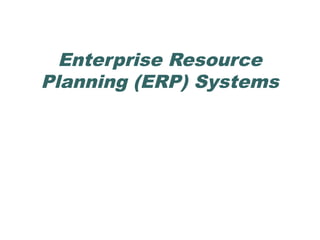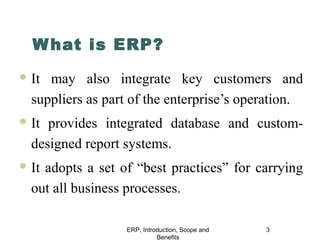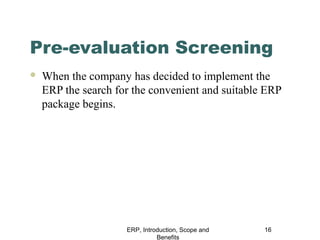Enterprise resource planning (ERP) software integrates different departments within a company to automate business processes. ERP provides a centralized database to enable information sharing across departments. Implementing ERP involves multiple phases including evaluating software packages, planning the project, identifying gaps between existing systems and ERP capabilities, reengineering business processes, configuring the ERP system, training staff, testing, and going live with the new system. ERP aims to improve integration, standardize processes, and reduce costs for organizations.





































